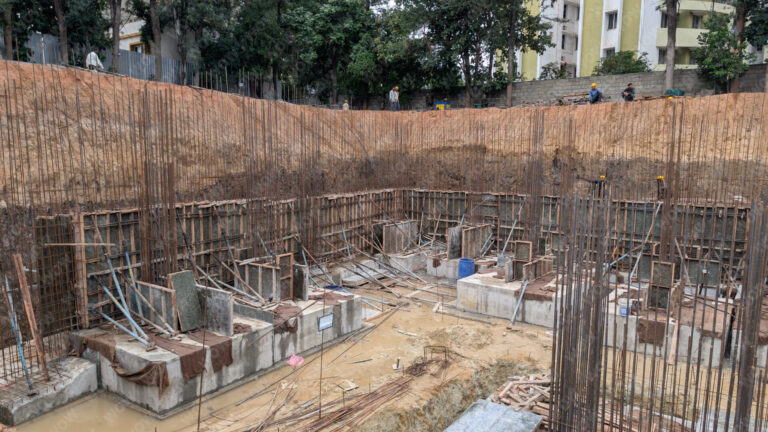There is a stage in construction where the spotlight does not shine, where applause is not heard, and where attention rarely lingers. Yet, it is here that the destiny of every building is decided. I speak of formwork.
To understand what is formwork in construction, remember this. Before concrete becomes a pillar, a wall, a slab, it needs a mould. Formwork is that mould. It is the foundation of precision, the silent architect of strength, the hidden hand that shapes the visible.
And yet, across construction sites in our cities and towns, the same mistakes are repeated. Mistakes with formwork materials. Mistakes with formwork panels. Mistakes with formwork boards and formwork sheets. Mistakes that cost money, time, and reputation.
Let us not shy away from the truth. Let us examine these errors, understand their cost, and learn how to avoid them.
Mistake 1: Choosing the Wrong Material
Too often, decisions about formwork are driven by habit or by the lowest price tag. Builders reach for centring plywood or shuttering plywood without asking the larger question. How many times will this sheet serve me? What finish will it give my concrete? What wastage will it leave behind?
The reality is harsh. Even the so-called Best Shuttering Plywood rarely lasts more than 5 to 10 uses. It absorbs water. It warps. It delaminates. It ends up in the waste pile, long before its value has been recovered.
The alternative? Plastic shuttering ply. Among them, one name rises above the rest: WoWBoards. Crafted from recycled plastic boards and recycled plastic sheets, they endure. Fifty repetitions and more. Uniform concrete finishes. Zero swelling from water. This is why they are hailed as the Best Plastic Shuttering Sheet, the Top Plastic Shuttering Sheet that is rewriting the future of formwork.
Mistake 2: Ignoring the Power of Reusability
Formwork is not a one-act performance. It must return again and again, floor after floor, pour after pour. Yet, contractors often underestimate the importance of reusability.
With plywood, repetition is limited. Each use diminishes the surface quality. Each cycle brings the board closer to disposal. The result is escalating cost.
Reusable formwork, like WoWBoards, changes the narrative. Where plywood requires replacement five times to achieve fifty repetitions, WoWBoards achieve the same with a single purchase. The numbers speak loudly. The savings are substantial. The environmental impact is transformative.
Mistake 3: Poor Handling and Storage
Even the finest material falters under careless hands. Across sites, one sees formwork stacked on wet ground, exposed to rain, chipped and battered before it has had a chance to serve.
Plywood suffers most from this negligence. Moisture seeps in. Edges swell. Strength is lost. What was once usable for ten repetitions may not last beyond five.
WoWBoards, however, offer resilience. They do not absorb water. They withstand rough handling. They can be washed and reused without degradation. Still, discipline is required. Proper frames. Engineered runners. Correct spacing. With these, WoWBoards can achieve not just fifty repetitions, but more.
Mistake 4: Compromising on Finish Quality
The mark of a building lies in its surface. The concrete must emerge smooth, aligned, precise. Yet, when damaged or low-quality formwork sheets are used, the result is uneven finishes, honeycombing, and costly plastering to cover the flaws.
Shuttering plywood cannot escape this fate. With each reuse, its surface becomes rougher, its impression on the concrete poorer.
In contrast, WoWBoards retain their integrity. Whether on the first use or the fortieth, the finish remains smooth, uniform, professional. The building rises not with compromise, but with pride.
Mistake 5: Ignoring Sustainability
This is the mistake of our times. We think only of today’s cost and not of tomorrow’s consequence. Every centring plywood sheet, every plywood panel, every board discarded is another blow to our forests. Another weight on our landfills. Another compromise for future generations.
The industry is already one of the highest contributors to waste and pollution. Can we afford to continue this path? The answer is no.
WoWBoards point us to a better way. By using recycled plastic sheets, they divert tonnes of waste from oceans and dumpsites. They eliminate the need for virgin timber. They prove that construction can be strong and sustainable at the same time.
How to Avoid These Mistakes
The path is clear.
- Evaluate true cost, not just upfront price. Consider cost per use. Compare plywood and WoWBoards honestly. You will see the difference.
- Choose materials designed for reusability. Invest in panels that will serve you for fifty cycles and more.
- Handle with discipline. Even WoWBoards, resilient as they are, reward proper handling with longer life.
- Prioritise concrete finish. Do not settle for uneven surfaces. Demand uniformity from your formwork.
- Build responsibly. Align your choices with sustainability. Let your buildings rise without destroying the resources that sustain us.
WoWBoards: The Future of Formwork
There are many types of formwork in construction. Timber. Steel. Plywood. Plastic. But in the conversation of the future, one name carries the resonance of change: WoWBoards.
They embody strength. They embody efficiency. They embody sustainability. They save cost. They save time. They save the environment.
When you choose WoWBoards, you are not just buying formwork panels or formwork boards. You are buying reliability. You are buying responsibility. You are buying respect for your craft and for the world beyond your site.
The Final Word
Mistakes in formwork are not inevitable. They are choices. Choices made in haste. Choices made in habit. Choices that can, and must, be corrected.
The lesson is simple. Do not compromise. Do not repeat the errors of the past. Look to the future. Look to WoWBoards, the Top Plastic Shuttering Sheet, the product that ensures your projects rise taller, stronger, and cleaner.
Because in the end, formwork is not just about holding concrete. It is about holding our values, our vision, and our responsibility to build a world worthy of applause.

